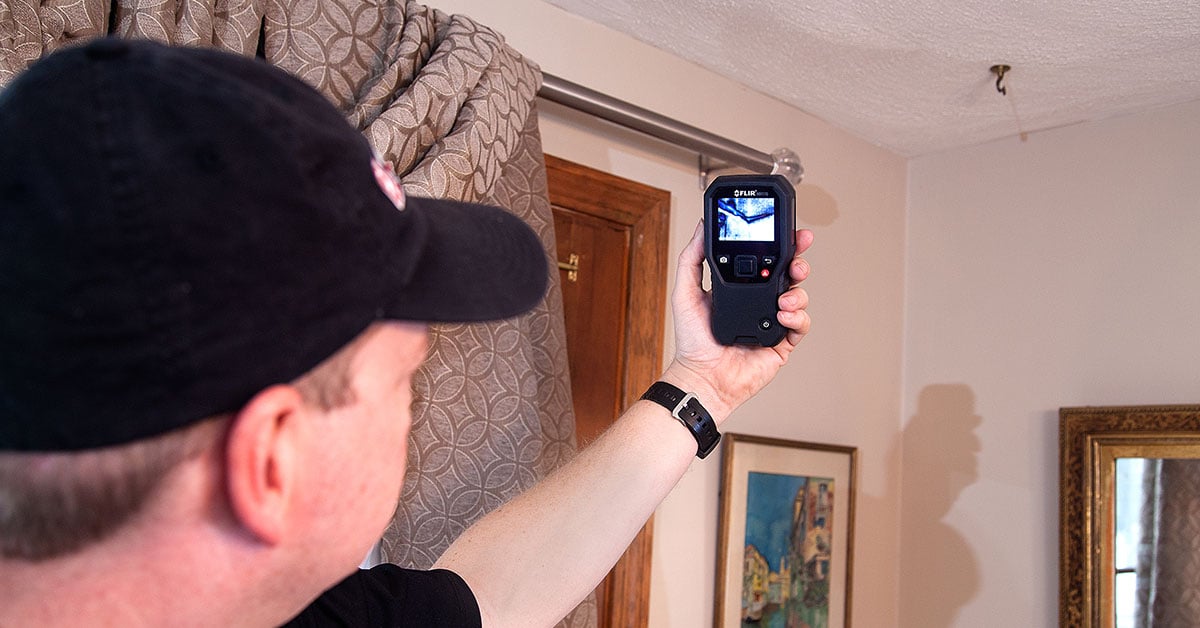Detecting Hidden Water Line Leaks: Six Practical Detection Tricks
Detecting Hidden Water Line Leaks: Six Practical Detection Tricks
Blog Article
The writer is making a number of great annotation relating to Finding hidden leaks in general in this article down below.

Early discovery of leaking water lines can minimize a potential catastrophe. Some tiny water leaks may not be visible.
1. Analyze the Water Meter
Every home has a water meter. Examining it is a proven manner in which assists you uncover leakages. For starters, turn off all the water sources. Ensure no person will certainly flush, utilize the faucet, shower, run the cleaning maker or dish washer. From there, go to the meter as well as watch if it will certainly change. Considering that no person is utilizing it, there ought to be no movements. If it relocates, that suggests a fast-moving leak. If you detect no adjustments, wait a hr or 2 and examine back once again. This implies you might have a slow-moving leakage that can also be underground.
2. Examine Water Consumption
If you find sudden changes, in spite of your usage being the very same, it suggests that you have leaks in your plumbing system. An unexpected spike in your bill shows a fast-moving leakage.
On the other hand, a consistent rise every month, even with the same practices, shows you have a slow leakage that's likewise slowly intensifying. Call a plumber to extensively check your property, especially if you feel a warm location on your floor with piping underneath.
3. Do a Food Coloring Test
When it involves water usage, 30% comes from toilets. Test to see if they are running correctly. Drop flecks of food shade in the tank as well as wait 10 minutes. If the shade somehow infiltrates your dish throughout that time without flushing, there's a leakage between the container as well as dish.
4. Asses Outside Lines
Do not forget to inspect your exterior water lines also. Examination faucets by affixing a yard tube. Needs to water seep out of the connection, you have a loose rubber gasket. Replace this and also ensure all links are tight. If you've got an automatic sprinkler, it will certainly assist get it skillfully analyzed as well as preserved every year. One small leak can waste lots of water as well as spike your water expense.
5. Check and also Analyze the Situation
Property owners need to make it a practice to inspect under the sink counters as well as also inside cupboards for any type of bad odor or mold growth. These two red flags indicate a leak so prompt focus is required. Doing routine examinations, even bi-annually, can conserve you from a major problem.
Inspect for stainings and also compromising as the majority of pipes and also appliances have a life span. If you think leaking water lines in your plumbing system, do not wait for it to escalate.
Early discovery of leaking water lines can reduce a potential calamity. Some tiny water leaks might not be noticeable. Inspecting it is a guaranteed way that helps you uncover leaks. One small leak can waste tons of water as well as spike your water costs.
If you think dripping water lines in your plumbing system, don't wait for it to rise.
How to Know If Your Home Has a Hidden Leak
Water Meter Reveals Inexplicable Water Usage
If you’d like to test whether or not there’s a leak somewhere in your home, you can do this using your water meter. Here is how to conduct the test:
Don’t use any water in your home for at least 30 minutes; this also means not turning on faucets or water-using appliances.
Go outside, and check your water meter for activity.
If your water meter shows that there was activity, even though no one was using any water, this proves that there is a leak in your home.Visible Mold or Mildew Growth
Leaks behind walls create moist, dark environments that allow mold and mildew to grow and thrive. Eventually, you might see mold growth forming on the wall closest to a hidden leak.
If mold is growing in an area that receives a high amount of moisture, such as a bathroom, it may simply be an indication that better ventilation is needed. However, if you see mold growth on a wall or the ceiling in an area where you would not expect, you probably have a hidden leak.
Musty, Mildew Odor
Sometimes you might not be able to see the mold or mildew that is growing as a result of a leak. However, the smell can give the problem away just as easily. If you catch a whiff of something musty, there’s a good chance that old water is collecting somewhere in your home that you can’t see.
Stained/Warped Walls, Ceilings, or Floors
When your home soaks up water, a variety of red flags can become visible, including ceiling stains, bubbling drywall, warped walls, and sagging floors. While these issues can be caused by excess humidity, they can also be signs that a pipe or plumbing connection has started leaking behind your walls.
Inexplicably High Water Bill
After a while, you get a general sense for what your water bill should be. If you own a pool or sprinkler system, your bill will tend to be higher during summer. However, if you receive a water bill that seems especially high, and you can’t figure out what caused it, then you may have a hidden leak somewhere that’s increasing your bill.
https://www.plumbingjoint.com/blog/2019/july/how-to-know-if-your-home-has-a-hidden-leak/

Hopefully you enjoyed our topic about Leaking water lines. Thanks so much for finding the time to read our blog post. Enjoyed reading our blog posting? Please share it. Help other people locate it. I praise you for your time. Visit again soon.
Schedule Here Report this page